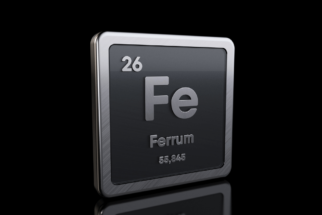
Ferrous and non-ferrous metals – what’s the difference?
Not all metals are equal.
For a start, depending on their properties, they can be categorised into two main groups: ferrous and non-ferrous. And this categorisation determines which applications they are most suitable for.
As a leading supplier and manufacturer of fabricated products, we have excellent knowledge in this area. Metals are our specialist subject. And here, we take a closer look at the main differences between ferrous and non-ferrous varieties and explore the key characteristics of each.
3 differences between ferrous and non-ferrous metals
1. Iron content
This is the defining difference between ferrous and non-ferrous metals.
Ferrous metals contain iron. In fact, the word ‘ferrous’ comes from the Latin word for iron, ‘ferrum’ – and some of the most common examples include steel, carbon steel, cast iron and wrought iron. Non-ferrous metals, on the other hand, do not contain iron. Some of the most well-known include aluminium, brass, copper, lead, zinc, tin, as well as the full range of refractory metals.
2. Malleability
Ferrous metals are renowned for their tensile strength and durability. That’s why, they’re a popular choice in the construction industry – and are frequently used to build skyscrapers, bridges, railroad tracks, industrial piping, shipping containers, domestic tools, commercial tools and more.
By contrast, non-ferrous metals are much softer and more malleable. This makes them significantly easier to fabricate. They lend themselves well to various machining techniques, as well as casting and welding. And as a result, can be used for a wide range of industrial and aesthetic purposes.
3. Corrosion
Ferrous and non-ferrous metals also differ in terms of their corrosion resistance.
Due to their high carbon content, ferrous metals are vulnerable to rust – particularly when exposed to moisture. The only two exceptions to this rule include wrought iron (which resists rust due to low carbon levels) and stainless steel (which is protected due to the presence of chromium).
Non-ferrous metals, however, demonstrate excellent resistance to both rust and corrosion. This is due to the absence of iron. And it makes them ideal for use in a range of outdoor applications.
4. Magnetism
Last but not least, whilst ferrous metals are highly magnetic, non-ferrous metals demonstrate no magnetism whatsoever. This is due to the difference in their iron content. And once again, the distinction makes them better suited to different applications.
For example, magnetic ferrous varieties are particularly useful for motor and electrical jobs, whilst the non-magnetic nature of non-ferrous metals makes them a more appropriate choice for wiring.

Non-ferrous metals and fabrication at Special Metals
Here at Special Metals, non-ferrous metals are our forte.
After all, we specialise in machined products and metal fabrication – and, thanks to their malleability, non-ferrous metals lend themselves perfectly to the services we provide.
All of the metals that we supply are of the non-ferrous variety and currently include molybdenum, niobium, tantalum, tungsten, zirconium and titanium. Detailed information on the unique qualities and characteristics of each can be found on the respective ‘materials’ pages, as well as in our previous blog: ‘How to choose the right refractory metal for your project’.
Why not take a look today? Or, alternatively, to find out more about the difference between ferrous and non-ferrous metals – and perhaps get a little advice on the best option for your requirements – please feel free to get in touch. As we said, this is our area of expertise, and we’re always happy to help. Just give us a call on +86-755-29936699 or send an email to inquiry.mp@professionalmanufacturing.com.

Leave a response
Your email address will not be published. Please enter your name, email and a comment.